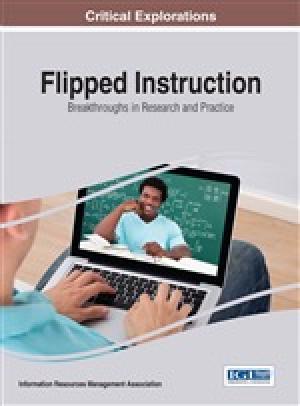Resources by Jared E. Alcántara

Ruth Enid Zambrana’s Toxic Ivory Towers presents readers with new research on the conditions and consequences of workplace stress among underrepresented minority (URM) faculty in higher education. It draws from the “largest web-based survey of URM faculty in the United States to date” (13) and focuses particular attention on the experiences of African American, Latinx, and American Indian early- to mid-career faculty at elite universities (12). The study examines “the associations between workplace stress, academic organizational factors, coping strategies, and physical and mental health among URM faculty” (10). Zambrana also brings more than thirty-five years of experience to the table as a URM teacher, researcher, and faculty member in order to demonstrate that “workplace stress on URM faculty colleagues is uniquely and adversely impacting their lives” (21). In chapter one, Zambrana illustrates the gap between the stated commitments and actual commitments of universities to diversity initiatives in general and to URM faculty in particular. Then chapter two explores the complicated history behind recruiting URM faculty into the academy. Chapters three through five focus on the climates in which URM faculty experience high levels of stress: climates that are often structurally racist (chapter three), that use mentoring programs to mask deeper problems (chapter four), and that foster micro- and macro-aggressive discrimination (chapter five). Chapters six through eight deal with the impact of work stress on URM homes and families (chapter six), on advancement opportunities such as promotion or tenure (chapter seven), and on emotional and professional well-being (chapter eight). Chapter nine considers the complexities around gender dynamics. Chapter ten exhorts academic leaders to listen to and learn from URM faculty experiences in order to renew their practices. On occasion, Toxic Ivory Towers plods along on account of too many first-hand verbatim reports. More selectivity in verbatims would help with flow. Also, it would be more beneficial to readers if Zambrana proposed a clearer roadmap for the future. Creative solutions are usually more complex than learning from past mistakes and correcting them. However, the many strengths of the book will lead many readers to overlook its weaknesses. Zambrana unmasks the misleading data that a lot of universities publish on the “success” of diversity initiatives; she offers constructive language for URM faculty to help name their experiences; and, her work provokes responses that challenge the status quo. Those who read this book may experience a diverse number of responses: some may be surprised by research findings, others unsettled by testimonies, others reassured they are not alone in their experiences, and still others an aggregate of reactions. Every academic leader (presidents, deans, department chairs, and so forth) who wants positive change in these areas will benefit from interacting with Zambrana’s research, and virtually every URM faculty member will benefit from her adeptness at naming the workplace stressors that they experience.

In many traditional classrooms, the teacher uses lectures to transmit course content to students. A “flipped” classroom is one in which a teacher presents lectures and delivers other course content outside of class (for example, via video- or audio-recorded and written instruction) and prioritizes activities, discussion, and higher-level analytical thinking during class time. Flipped Instruction: Breakthroughs in Resource and Practice offers readers the latest theories, strategies, and pedagogies on flipping classrooms. Bringing together thirty-seven contributors from seven countries, thirty-two colleges and universities, four high schools, and one institute, it presents “a comprehensive collection of research on the latest findings” on flipped teaching and learning in order to provide “researchers, practitioners, and all audiences with a complete understanding of the development of applications and concepts surrounding these critical issues.” (ix) Each contributor operates under the assumption that flipping a classroom in a professional and pedagogically informed manner begets educational gains that far exceed the costs of time investment, technological learning curves, and pedagogical challenges. In chapter 4, David Starr-Glass makes a memorable statement about the benefits by explaining that a flipped classroom “changes a teacher-centered process to a student-centered one. The ‘sage on the stage’ becomes the ‘guide on the side,’ with a shift from transmission to learners to a flow among and between learners.” (51, emphasis in original). This book addresses nearly every domain where flipped teaching has made significant inroads: K-12 education, higher education, online, ESL, and foreign language education. Its twenty-four chapters are organized into four main sections. Section 1 (Chapters 1-6) addresses course design methodology and how the latest pedagogies impact flipped classrooms. Section 2 (Chapters 7-12) discusses the unique challenges and opportunities of flipping ESL and foreign language learning classrooms. Section 3 (Chapters 13-20) considers flipped instruction in higher education. Section 4 (Chapters 21-24) offers the latest curriculum developments in K-12 education. Flipped Instruction accomplishes its goal of providing educators with a comprehensive resource on the latest research in theory and practice. It also strikes a nice balance between being academically-oriented and practitioner-oriented. Academics will enjoy the book’s emphasis on new theories, pedagogies, and educational innovations, and practitioners will appreciate the takeaways from educational experiments, the rich repository of resources, and the activities to try in the classroom. That stated, the book would serve its readers better if it were more learner-friendly, an ironic weakness since it was written by expert teachers who value learner-centered education. Perhaps under the watchful eye of a single editor, it would exhibit stronger collaboration between authors, be better organized, and would avoid needless repetition (for example, an unusually high number of authors reviewed the history of flipped classrooms). Teachers of theology and religion who appreciate flipped instruction or who practice it as a pedagogical strategy will appreciate the many resources that Flipped Instruction provides in course design, Internet and computer software ideas, and learning activities. However, the book is not a primer for the uninitiated in flipped teaching and learning. A different book would be a better introduction to the subject.